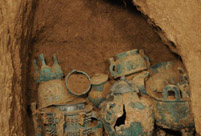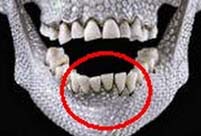 Deng Xiaoping: 'I have a clear conscience all my life'
Deng Xiaoping: 'I have a clear conscience all my life'
 Xi Jinping: 'The people are our strength'
Xi Jinping: 'The people are our strength'
 Amazing cliff diving in cold winter
Amazing cliff diving in cold winter
 Enjoy Sochi 2014 in slow motion
Enjoy Sochi 2014 in slow motion
 University student sentenced to death for poisoning roommate
University student sentenced to death for poisoning roommate
 Chinese lunar New Year celebrated in San Francisco
Chinese lunar New Year celebrated in San Francisco
 Taiwan Lantern Festival 2014
Taiwan Lantern Festival 2014
 Haiyang Yangge: make up
Haiyang Yangge: make up
 China's top 10 richest cities
China's top 10 richest cities
The program follows the trap-neuter-return principle, or TNR, a method of humanely trapping unaltered stray cats, spaying or neutering them, and returning them to the location where they were collected, according to Gao Haiying, a Beijing-based animal protection organization staff member in charge of the museum's program.
Gao said that Chinese pet keepers never had a tradition of neutering their pets as they think it is better for the animals, but the resulting births have led to higher numbers of abandoned pets.
In a densely populated city like Beijing, the capital of China, the control of stray cats has become a controversial issue as people have debated whether neutering and euthanasia are effective and humane methods to curb the stray cat numbers.
Ma said 181 cats in the Forbidden City were neutered in the past five years and the number of stray cats is now steady, adding that every neutered cat has been marked to tell it apart from the others.
Ma even has a ledger in which he has recorded all "personal information" about the cats: names, pregnancy status, neutering operation type and the amount of money spent on the operation.
"From 2009 to 2013, the program cost 18,410 yuan (3,023 U.S. dollars) in total, a small amount compared with the whole sanitation work budget," said Ma.
The museum's money has not been spent for naught. Though rarely seen by the visitors, the cats have played an important role in safeguarding the integrity of the precious antiques.
"They are a powerful deterrent to museum rats and we have not found a single piece of cultural relics damaged by cat claws," said Ma.

 Chinese Dream: the Chinese Spirit and the Chinese Way
Chinese Dream: the Chinese Spirit and the Chinese Way 51 bronze sacrificial utensils unearthed in Shaanxi
51 bronze sacrificial utensils unearthed in Shaanxi Most gorgeous female celebs in Chi-pao
Most gorgeous female celebs in Chi-pao Second round of test kicks off at Beijing Film Academy
Second round of test kicks off at Beijing Film Academy Ancient Qiang people had vertically grown teeth
Ancient Qiang people had vertically grown teeth Top 10 Chinese youth’s favorite seaside destinations
Top 10 Chinese youth’s favorite seaside destinations Traditional Tibetan clothing tailors
Traditional Tibetan clothing tailors In photos: Unveiling Taishan station
In photos: Unveiling Taishan station Beautiful moments of family reunion
Beautiful moments of family reunion Chinese warplanes C919 to appear at Singapore Airshow
Chinese warplanes C919 to appear at Singapore Airshow Ruins of Shang Dynasty's structure unearthed in Shaanxi
Ruins of Shang Dynasty's structure unearthed in Shaanxi  Intercity high speed train in operation
Intercity high speed train in operation Severe coldness freezes large parts of China
Severe coldness freezes large parts of China  Beautiful moments of Sochi
Beautiful moments of Sochi  It's not just performing this year
It's not just performing this yearDay|Week|Month